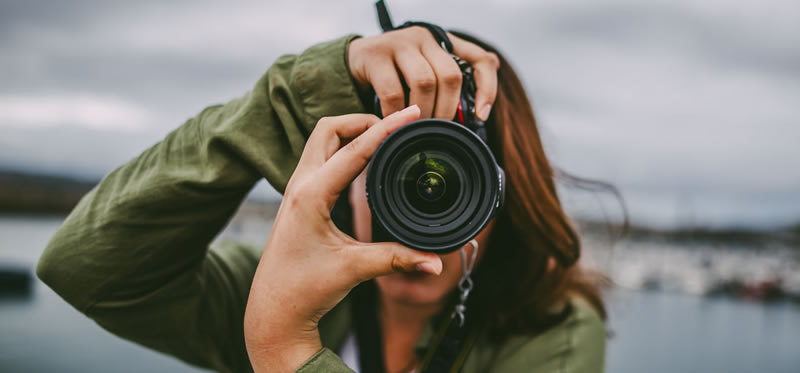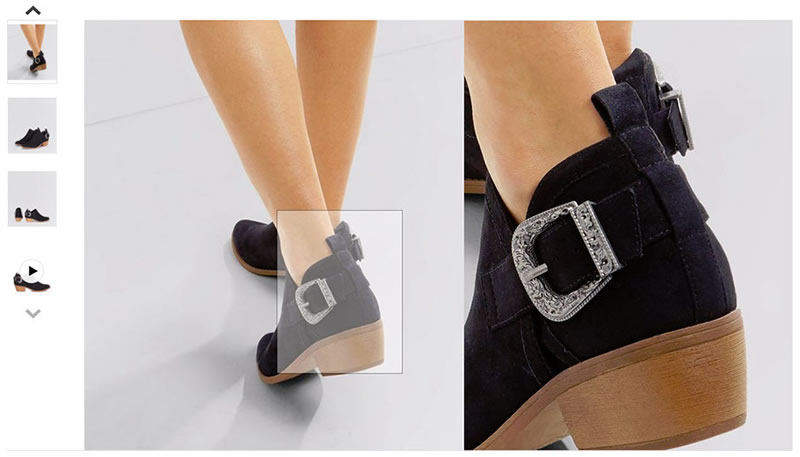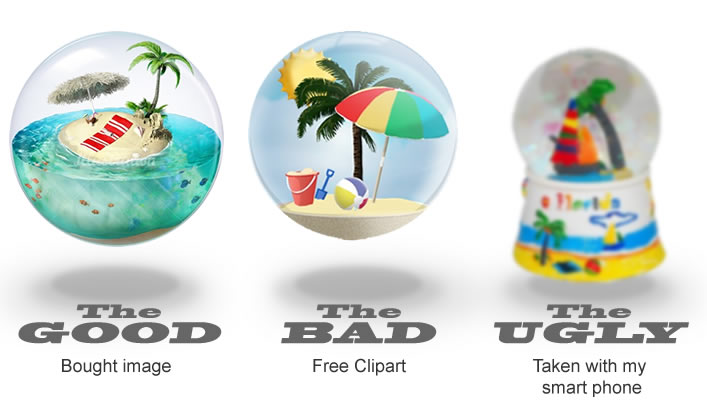
This blog post was updated on 4 February 2025.
We live in an era in love with images. You do not have to look far before you see people snapping away at absolutely everything: landscapes, food, home renovations, pets, selfies, business conferences – the list is endless. The availability of ever more affordable and sophisticated smartphones means that nowadays almost everybody can take pictures and see the results instantly.
Just look at the popularity of Instagram and Pinterest. Worldwide, these two image-centric social networks boast a staggering 2.5 billion monthly active users combined and show no signs of slowing down.
But what does this have to do with your business’ marketing strategy? Everything. When people come across your brand’s content online, probably the first thing they will notice will be your images. In just a few seconds, your images will dictate whether the user stays and consumes your content, or keeps scrolling and clicks away. This blog post will explain how you can harness the power of images, and what they can do for your content marketing efforts.

What images can do for your content
They increase engagement
Including images in your content to complement the text increases the likelihood of people reading and engaging with your content. This is because people are naturally attracted to and intrigued by images. Do not be tempted to just stick any old image at the top of your content, however – the quality of the image is of huge importance.
Using shoddy images can make your organisation look lazy and amateur, and can be an immediate turn-off for a potential customer who will probably not even bother to read your actual content, however well-written it may be.
On the other hand, a good image can make your whole page look more appealing. Using relevant, high-quality images will give a better, more professional impression of your organisation and can implicitly foster trust, meaning that potential customers will be encouraged to read what you have to say.
They help with understanding and purchase decision-making
Some kinds of images, such as diagrams and graphs, can help readers to visualise more easily the points you are making in the body of your text, so these should definitely be considered if your subject matter is difficult to grasp or technical in nature. Failing to do so may result in some readers becoming confused and simply giving up on your content.
If your company operates in the e-commerce industry, then the use of good images becomes even more important, and you also need to think practically. Customers want to see exactly what it is you are selling, to see if it matches with what they want to buy. For this reason, it is strongly advised that you have multiple images (from different angles) of each product so that your potential customers can best visualise it in 3D and make an informed decision.

They go viral
And finally, whatever your industry, one massive benefit of images is their ability to go viral. Images are easy to share on social platforms, whether on image-centric websites like Instagram and Pinterest, or other social networks like Facebook and X (formerly known as Twitter) which also allow for image sharing. Posting a relevant and interesting image on social networks and including a link to your main content is a trick you should definitely use to promote your content more widely.
What makes a good image
Relevance and interestingness
A good image should reflect and support the text content. A completely unrelated image is at best pointless and at worst confusing and distracting, which can seriously put off a reader. You should not compromise interestingness for relevance though. Try to avoid boring and generic imagery, such as a businessperson posing with a laptop, as this can make your content look extremely dull. Images should be unique and stand out (as well as being relevant) as this will help to capture the reader’s attention and pique their interest, encouraging them to read on.


Size, colour and contrast
On a technical level, images should be crisp and clear. To avoid blurring, you should refrain from manually enlarging small images – these attractive little images suddenly turn rather ugly when blown up beyond their intended proportions. If you must enlarge an image because there is no alternative, there are AI tools such as BetterImage that can enlarge your image without losing quality.
You should also ensure that your images are appropriate based on their actual size on the webpage. The image at the top of this blog post is 800 x 373 pixels and fills the horizontal space at the top of this page. This looks natural and attractive, whereas having a tiny or oddly proportioned image would look silly and jarring. Try to avoid having images that are too big or too small, as both gigantic images that go off the edge of the screen and minuscule images that require the reader to squint are difficult to see.
Your images should have good colour contrast and good tonal contrast as this will make them easier for the reader to see and understand. It will also make your images look interesting, more attractive and help features stand out.
Stand out from the crowd
Of course, finding interesting, relevant and high-quality images to complement your content is going to be more challenging in some industries than others – but there is always a way. If you are in a challenging industry, then it is even more important that you push the boundaries and use good imagery in order to really stand out from the crowd.
How to get a good image
There are two ways you can get an image: by finding one that already exists or by getting a creative designer to create an image for you.
Stock images
If you choose to try and find a suitable existing image from the millions that are available online, you are faced with a choice: free images or paid images? Despite the fact that paid images are almost always better than their free counterparts, many people will immediately go for the free option – settling for a substandard image in order to save money. The potential return-on-investment from sourcing high-quality images is so high, however, that the wiser marketer would be prepared to pay in order to get that superior image.
Popular stock image websites include Adobe Stock, Getty Images, Shutterstock, iStock, Bigstock and Freepik.
Image websites allow you to filter by price, and each image can be bought in a variety of sizes – with the larger images costing more. The “small” images are not actually that small though, and should be sufficient for most blog posts and website content.
Bespoke images
Of course, no matter how long you scour the web and how much money you spend on sourcing images, it will always be better to have a creative designer – such as a web designer, graphic designer, photographer, illustrator or artist – create a bespoke image specifically for your content. These images can be tailor-made to each individual piece of content and made to your desired size to display on your website perfectly. This degree of customisation is not something you can just hope to stumble upon by chance whilst trawling through stock image websites. A creative designer will be able to follow your specifications to the letter and provide appropriate, beautiful and perfectly-sized images every time. This is especially important if you are in an industry where visualisation is difficult or stock photos are sparse.
So, ready to paint a picture?
In today’s visual world, incorporating imagery into your content marketing efforts is no longer something you can avoid. Images make your content more attractive, easier to understand and more likely to go viral online. There are a range of image sourcing websites that have millions of high-quality photos and graphics available for a good price. There is nothing better than having your images created for you by a creative designer though, as they can offer a degree of customisation to each piece of content that is simply impossible to find in stock imagery.
Want to learn more?
I hope this blog post has been a useful introduction to the importance of images in content marketing. For more in-depth information and advice, read my full-length guide here! From reading this guide, you will learn about:
- what images can do for your content
- what makes a good image
- how to get a good image
- how to use images to complement your international content marketing strategy








One Response
Keeep his ɡoing pleаѕе, grest job!